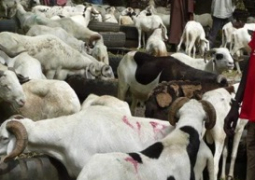
“The predicted rainfall amount over the country is predicted very likely to be above average to likely average rainfall for the period of July-August-September (JAS) over The Gambia,” the Department states in a statement released over the weekend.
“The interpretation of that means the country’s average is expected to have rainfall of equal to or more than 1000mm in the western sector of the country. Amounts in the range of 750 - 950mm are likely over the rest of the country.”
“The predicted ‘2024 rainfall values would therefore be above normal over large areas of the country. The latest figures indicate a 45% chance of above normal rainfall, 35% chance of near-normal rainfall and 20% chance for below normal rainfall. Put in simpler terms, this means that the chance of having above normal rainfall is higher than the chance of having normal rainfall.”
It further indicated that the 2024 rainfall season is expected to undergo more variability than the 2023 season with events such as early to normal onset, occasional flash flooding, late or normal withdrawal of rains and short to average dry spells at the start of the rain season.
“The beginning of the farming season (onset) in an agrarian economy like in The Gambia, where rain-fed agriculture is predominant, rainfall onset for the commencement of farming season is crucial.”
“It affects establishment of crops, agricultural production and subsequently, national economies. Failure in the timely establishment of rainfall onset usually affects farmers. It is essential that, after a given date, the rain will become fairly continuous and sufficient to provide adequate soil moisture for and after planting is maintained as the season advances for successful establishment of crops,” it noted.
The statement also indicated that in 2024, The Gambia is expected to see rainfall onset between 9th June and 15th June.
“These dates are expected to be generally early by up to 2 weeks over large parts of the country. Judicious use of these predictions in planning agricultural activities will lead to safe sowing and enhanced crop and food production. This information should be widely available to extension services and agencies that have the responsibility of advising farmers on appropriate time of planting and varieties to be planted,” it stated.
In view of the generally wet nature expected of the 2024 rainy season, meteorologists recommended farmers, herders, water resource managers, projects, and authorities to invest more in high-yielding crops tolerant of wet conditions such as rice, sugar cane, tubers among others.
It added that there is a need for “development of irrigated crops, particularly in the floodplains of the River Gambia, while taking care of the risks of flooding; set up systems for the collection and conservation of runoff water for agricultural and domestic uses in the dry season.”
“Support the deployment of climate-smart techniques to increase crop and fodder yields, in particular those related to excess rainwater; strengthen the information, supervision and agro-hydro-meteorological assistance systems to farmers; facilitate farmers access to improved seeds and agricultural inputs adapted to their needs; prioritise high land areas for planting particularly areas along the River Gambia.”





